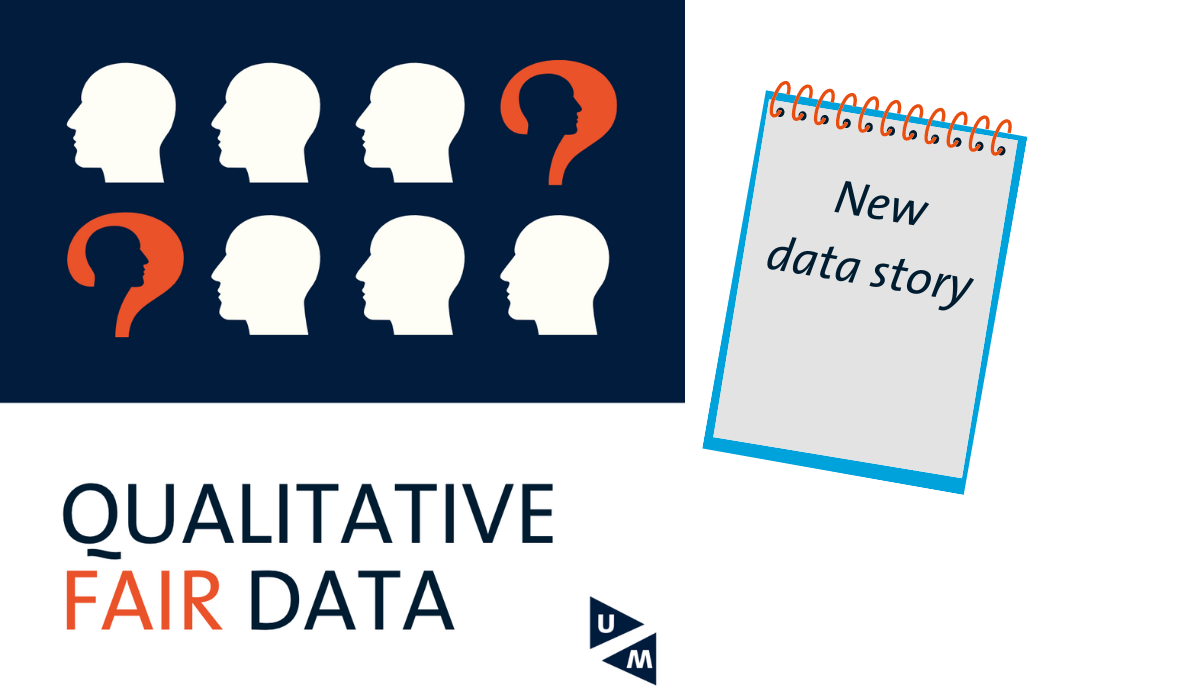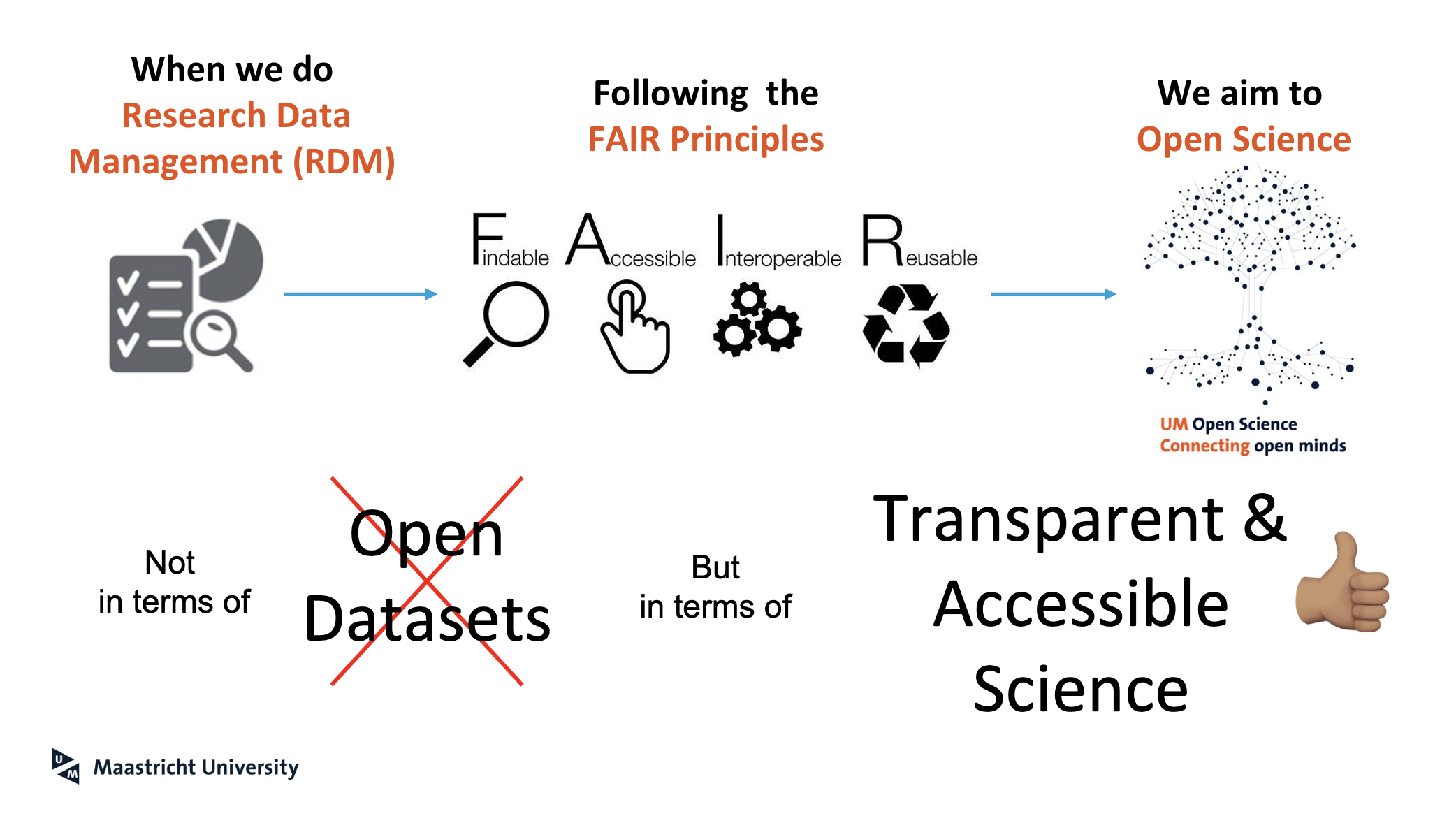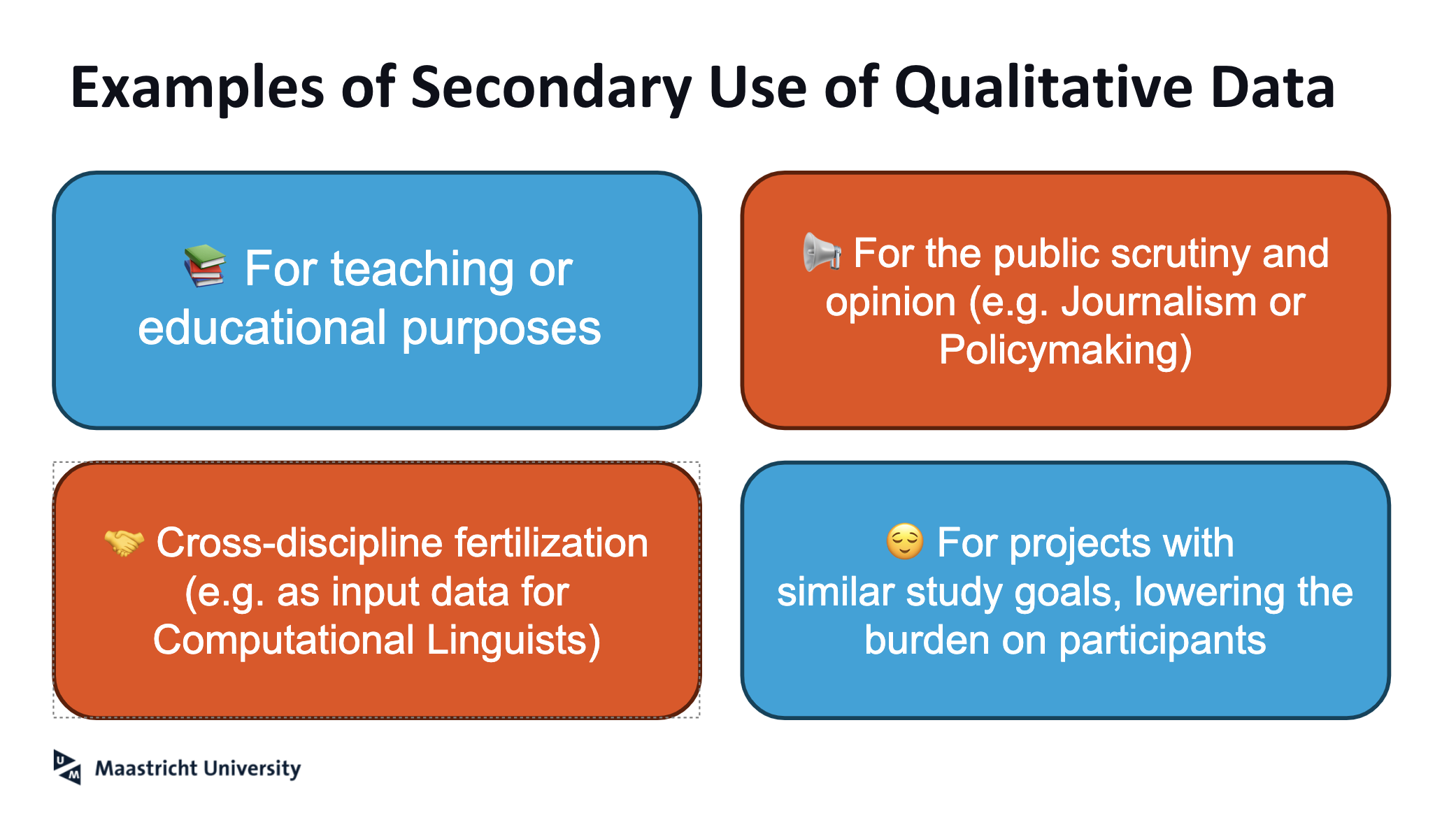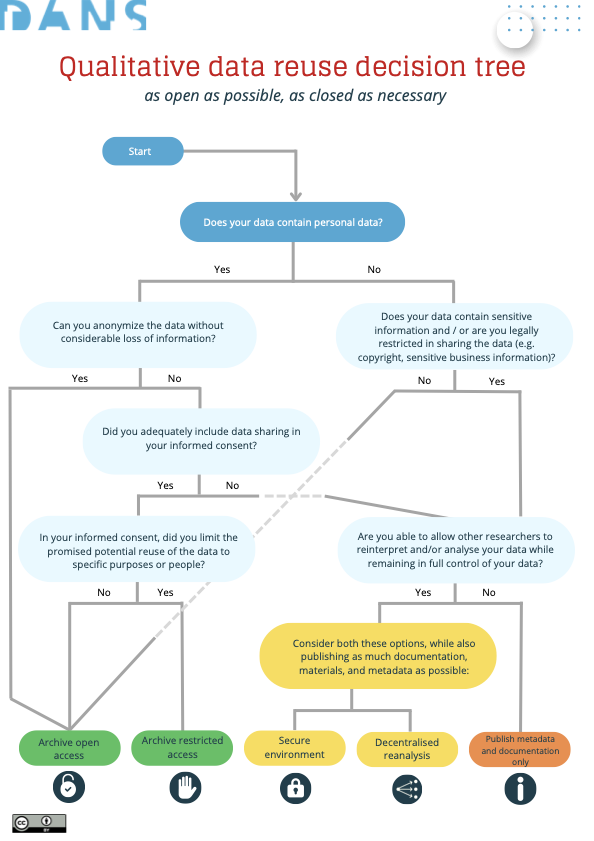How can FAIR data management be applied to qualitative research?
Before even getting into the FAIR aspect, it is worth noting that managing qualitative research data is a challenge in itself. Those conducting qualitative research know that this isn’t a linear path. Qualitative input normally occurs scrambled and unstructured, as opposed to quantitative research in which a set of standardized measurements is designed.
Qualitative research explores human experiences, perspectives, and events through methods like interviews, observations, or document analysis, focusing on the “why” behind things. Therefore, the data collection is often carried out through transcripts, field notes, and plain text documentation.
However, the FAIR principles of data management are designed to work with digital objects; they assume that the research data at hand is in a digital format. This assumption challenges the qualitative researcher since it requires a degree of digital literacy to effectively apply software tools and adapt data into interoperable formats.
FAIR data management ideally starts early in the research project. Normally, during the planning phase. For instance, a researcher must start thinking of the file format and tool to use for interview transcripts. – Will they be in .txt or .docx format? – Moreover, deciding on the file storage destination, or how they will be shared are factors that dictate which part of the data can be disclosed and what should remain confidential.
Publishing qualitative research data is desirable if we want to keep science transparent and accessible. Often, qualitative data is a (re)collection of public domain knowledge such as artefacts, media collections or documents, which are analyzed and then openly published.
However, qualitative data that is obtained from human subjects is typically not suitable for sharing as is. There are steps that need to be taken to protect the personal data of the study subjects, such as anonymizing sensitive information from transcripts, or creating a redacted version of confidential documents. Ultimately, it is possible to publish confidential files under restricted access conditions. In the dataset Testing Reflexive Practitioner Dialogues: Capacities for Socio-Technical Integration in Meditation Research, we can see that the interview transcripts are only accessible through access request, and there are clear terms of use which the researcher made available.
It is important to note that, prior to publishing qualitative data, one must confirm that all ethical and legal requirements have been met. Moreover, in cases where qualitative data contains highly sensitive information and anonymization is not feasible, or when participants did not consent to data reuse, it is advised to publish only the description and documentation of the research without making the data publicly available. This approach is illustrated in the dataset IDTraffickers: An Authorship Attribution Dataset to link and connect Potential Human-Trafficking Operations on Text Escort Advertisements.
Challenges and motivations in making qualitative data reusable
There are various challenges for sharing qualitative data, as described in the online course for Managing Qualitative Social Science Data by the Social Science Research Council (SSRC) and the Qualitative Data Repository (QDR), including 1) Ethical and legal constraints, 2) Contextuality (lack of context and background information to interpret the data accurately), 3) Anonymization (which is often difficult or even impossible), and 4) Acquiring consent for data reuse.
Nonetheless, recognizing these challenges is as important as considering the advantages of making qualitative data available for secondary use. For instance, results from content analysis or study protocols can be used for educational purposes. Also, anonymized transcripts could help specific fields. These cases can foster collaboration among researchers, and potentially reduce data collection costs while lowering the burden on participants. Furthermore, in citizen science, participants are actively involved and normally are keen on sharing their data.
Moving forward with qualitative FAIR data
An increasing number of data management guidelines specifically tailored to qualitative data are becoming available. Some relevant resources include:
- The UM’s Data Storage and Processing Finder, there is an option to filter on software tools that are suitable for sensitive data
- Utrecht University’s Data Privacy Handbook which provides guidance on sharing personal data for reuse, addressing legal and ethical concerns.
- The online course about managing qualitative social science data, offered by the Social Science Research Council and Qualitative Data Repository, that aims to equip researchers with skills for managing qualitative data.
- The Data Archiving and Networked Services’ (DANS) guidebook: Making Qualitative Data Reusable, that offers practical advice and a useful decision tree for reuse of qualitative data.
At UM, a Qualitative FAIR Data Coursebook and the Qualitative FAIR Data Workshop are provided to guide researchers on the FAIR principles and available tools and platforms.
The last workshop edition back in March, welcomed participants from all academic levels, from first year PhDs to associate professors, including a participant from a Danish university. There was a representation from departments across different faculties like FPN, FHML, and SBE. Their research topics were also varied, for instance, social psychology, service health education, digital agriculture or migration studies.
During the training, there were active discussions on topics like Terms of Use, Access Protocols, and Standard Vocabularies, which usually are not on the radar of qualitative researchers. Interestingly, we had some participants with quantitative backgrounds who wanted to learn about the qualitative side of FAIR data management. But also researchers like Inken Gast from the Department of Educational Research and Development (SBE), who has done qualitative research on the professional development of teachers in higher education, was curious about how to apply the FAIR principles, especially since she is familiar with mixed methods.
The training was a step towards discussing the possibilities and limits of applying the FAIR principles in qualitative research and how to adopt these practices aiming for Open Science. According to Inken; “these resources are like a toolbox where one can look back when needed”.
Conclusion
Navigating the FAIR principles with qualitative data requires careful consideration and balancing between making data available for reuse, safeguarding participants’ privacy, and staying true to the epistemological views one intends to be consistent with. Faculty data stewards and several resources are available to support researchers in determining the best strategy to make their data FAIR.
If you have any questions about qualitative FAIR data management, reach out to rdm-services@maastrichtuniversity.nl.
Authors: Fieke Wauters (Faculty Data steward – Faculty of Law), Maria Vivas-Romero (Faculty Data steward – FHML), Pedro Hernández Serrano (Coordinator Data Stewardship Services)





0 Comments